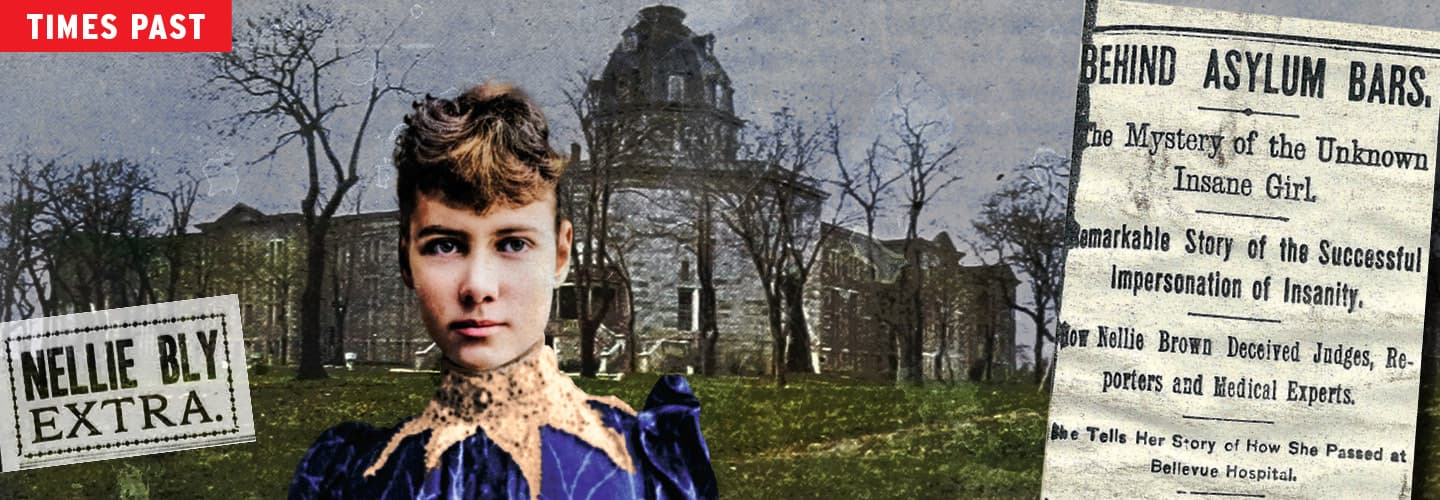Nellie Bly’s first day at the insane asylum* didn’t go well. After being forced to eat an inedible meal, she was escorted into a freezing bathroom, where she was ordered to undress. Dirty, ice-cold bathwater was poured over her head, and an attendant scrubbed her body with a used, discolored rag.
“My teeth chattered and my limbs were goose-fleshed and blue with cold,” Bly wrote in her account of the ordeal. “I think I experienced some of the sensations of a drowning person as they dragged me, gasping, shivering and quaking, from the tub. For once I did look insane.”
When Bly was committed to the Blackwell’s Island Insane Asylum in New York in the fall of 1887, she wasn’t really experiencing psychological distress. The trailblazing journalist had feigned mental illness in front of doctors so they would commit her. Her goal: to expose the atrocities at the asylum to the rest of the world.
Bly’s now-famous exposé was first published as a series of articles for the New York World newspaper and later in her book Ten Days in a Mad-House. Her brave reporting led to lasting reform at the asylum. It also put Bly on the map as a pioneering investigative journalist.
“The most important thing that she did was she gave a voice to voiceless people,” says Rosemary J. Brown, author of Following Nellie Bly: Her Record-Breaking Race Around the World. “She got them in the news.”
Nellie Bly’s first day at the insane asylum* didn’t go well. First, she was forced to eat a meal that was rotten. She was then led to a freezing bathroom, where she was told to undress. Dirty, ice-cold bathwater was poured over her head. And an attendant scrubbed her body with a used, discolored rag.
“My teeth chattered and my limbs were goose-fleshed and blue with cold,” Bly wrote about the experience. “I think I experienced some of the sensations of a drowning person as they dragged me, gasping, shivering and quaking, from the tub. For once I did look insane.”
Bly was committed to the Blackwell’s Island Insane Asylum in New York in the fall of 1887. At the time, she wasn’t really experiencing mental distress. The trailblazing journalist had led doctors to believe she had a mental illness so they would commit her. She aimed to expose the inhumane conditions at the asylum to the rest of the world.
Bly’s now-famous exposé was first published as a series of articles for the New York World newspaper. The series was later turned into her book Ten Days in a Mad-House.
Her brave reporting led to lasting reform at the asylum. It also put Bly on the map as a trailblazing investigative journalist.
“The most important thing that she did was she gave a voice to voiceless people,” says Rosemary J. Brown, author of Following Nellie Bly: Her Record-Breaking Race Around the World. “She got them in the news.”

